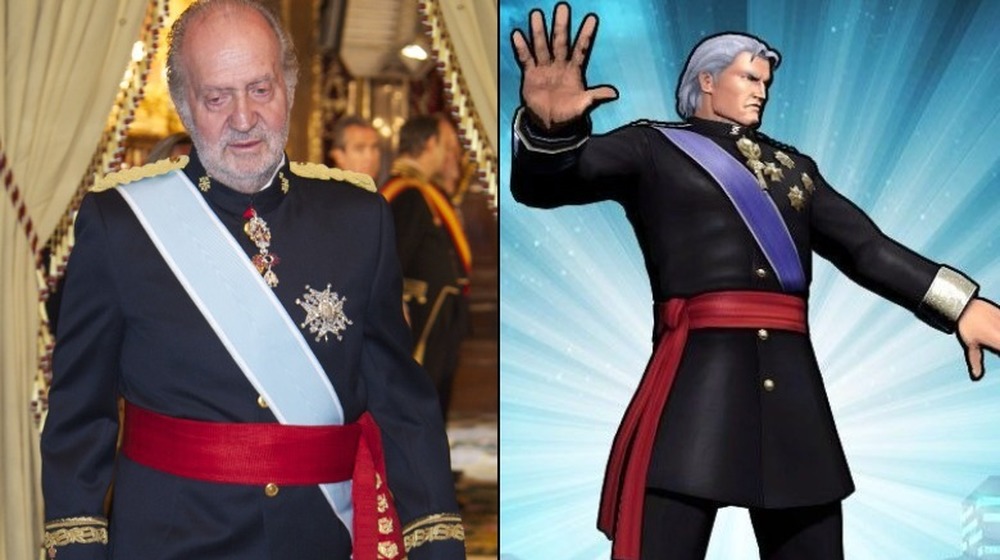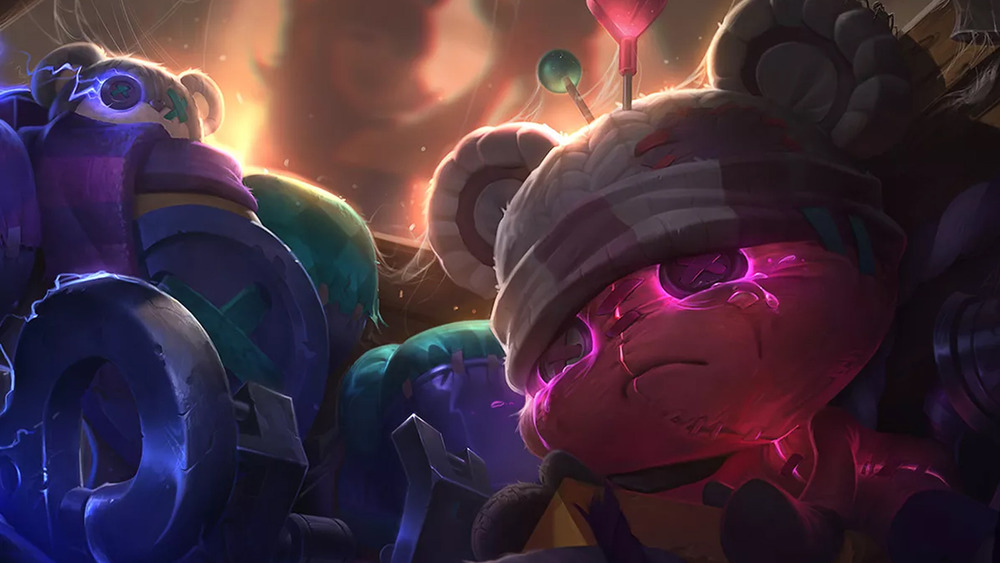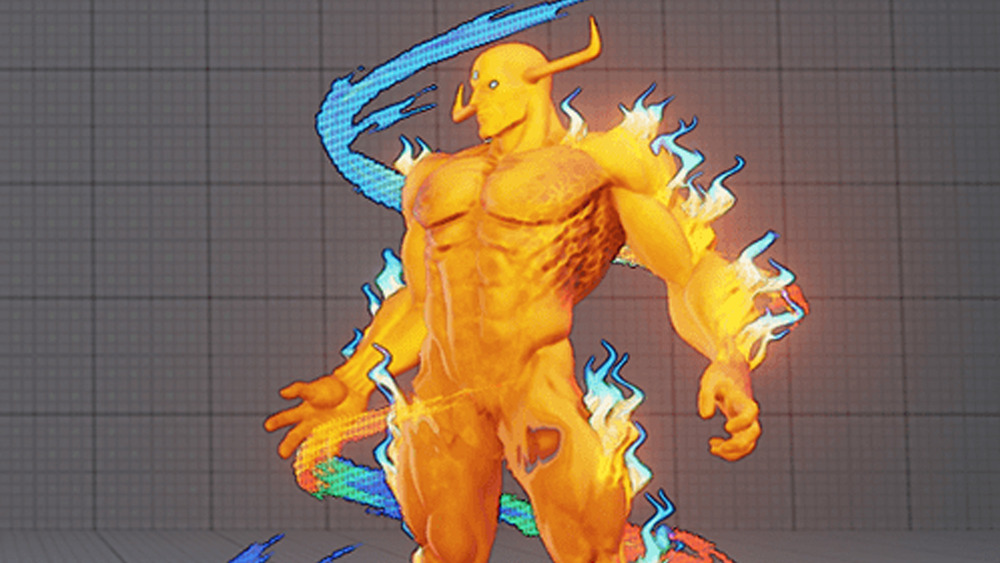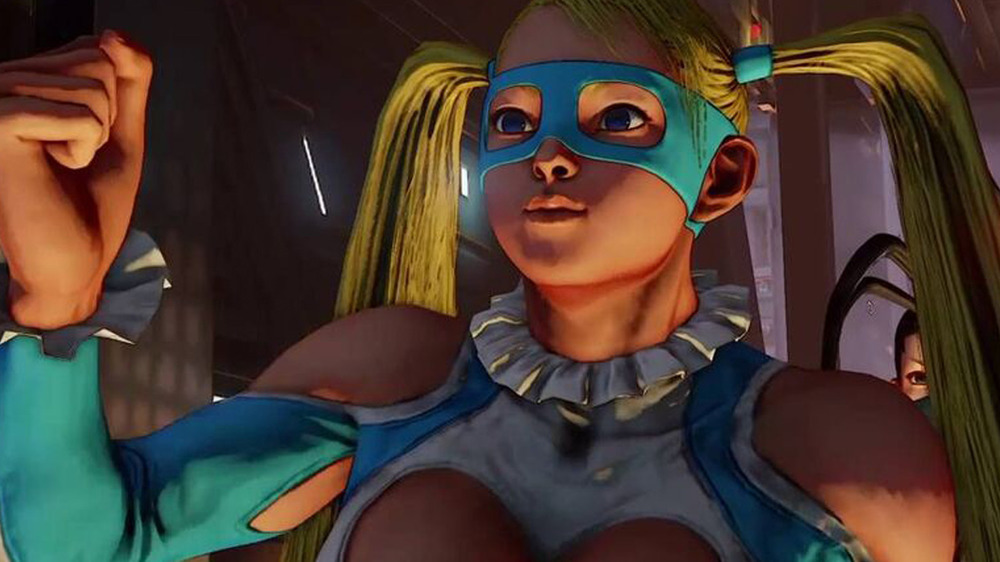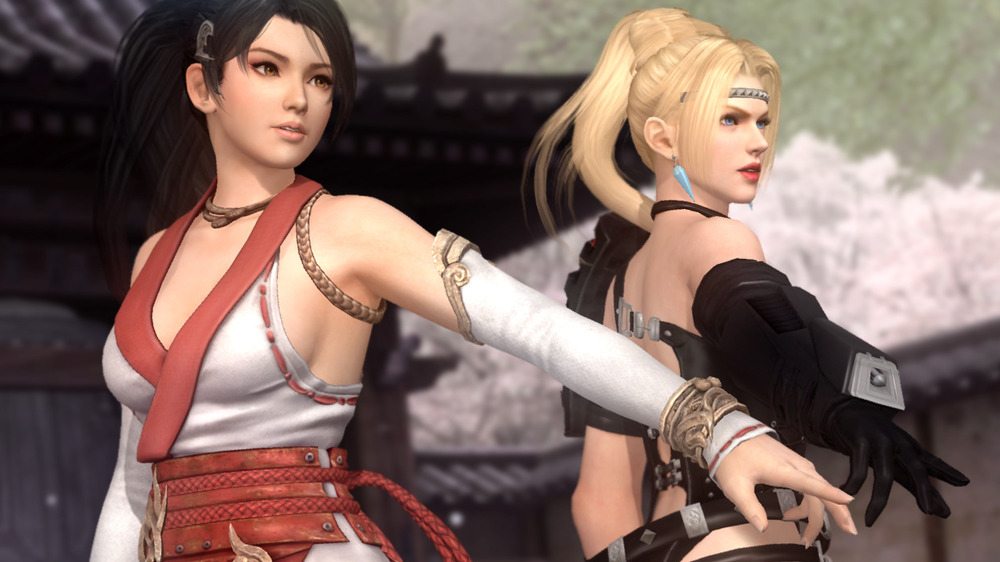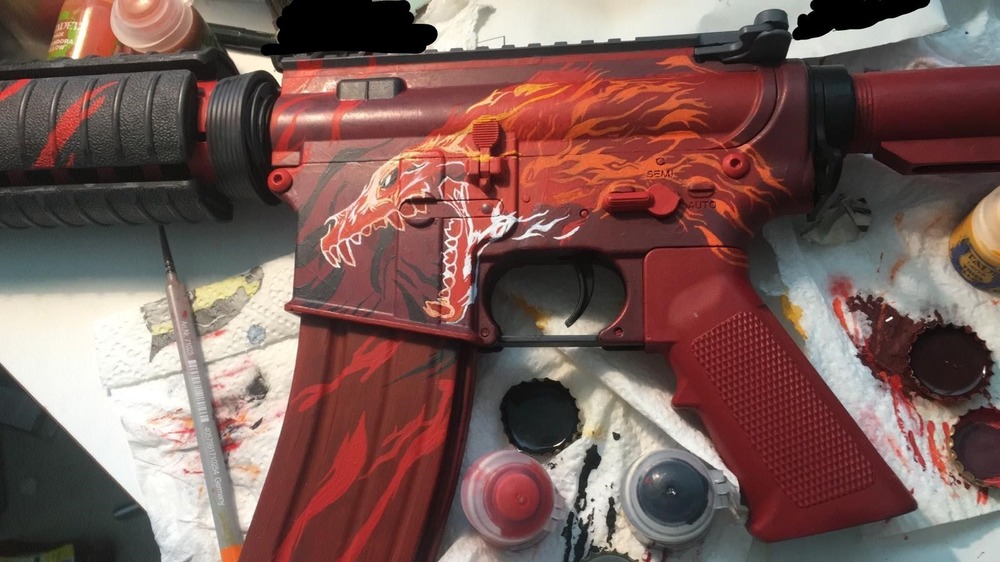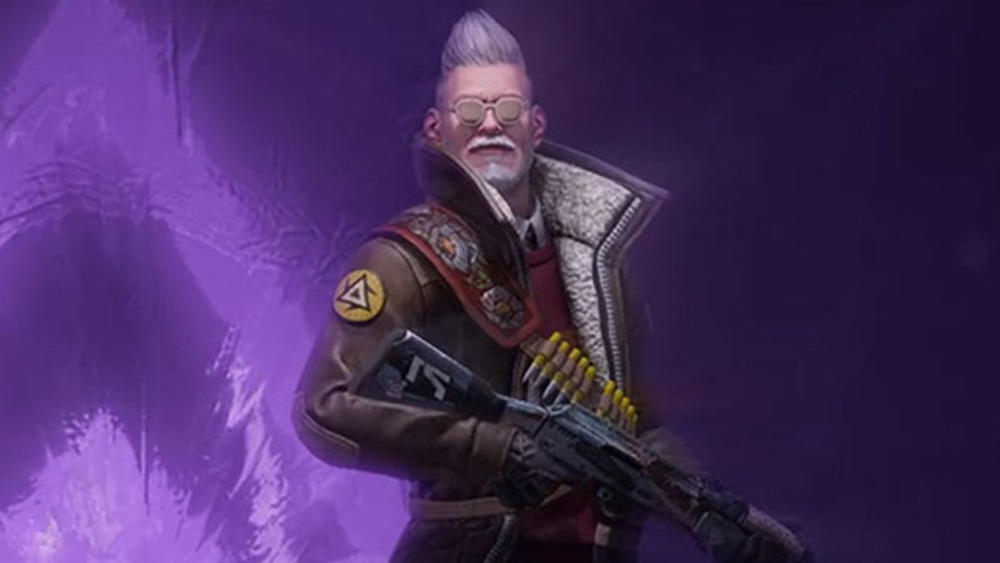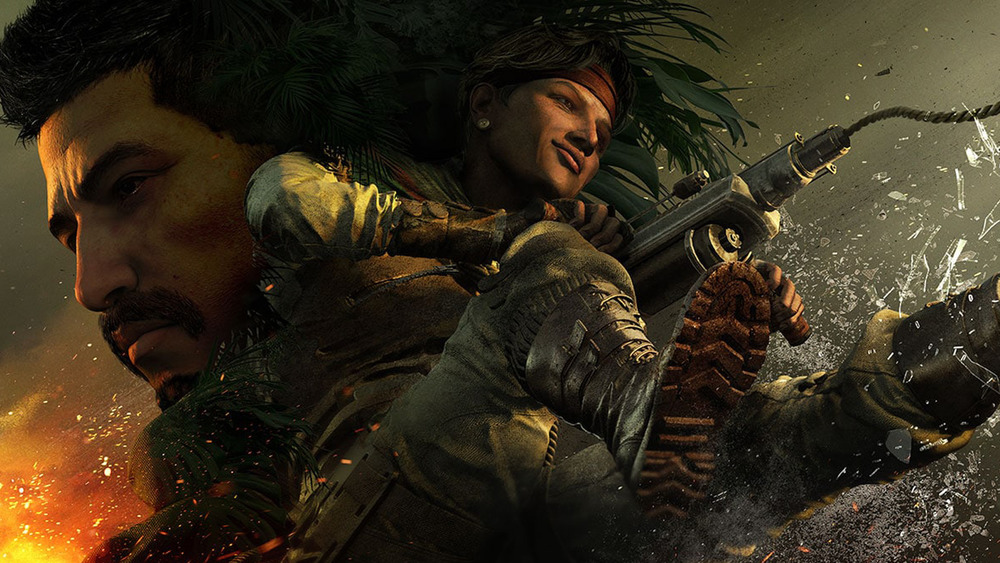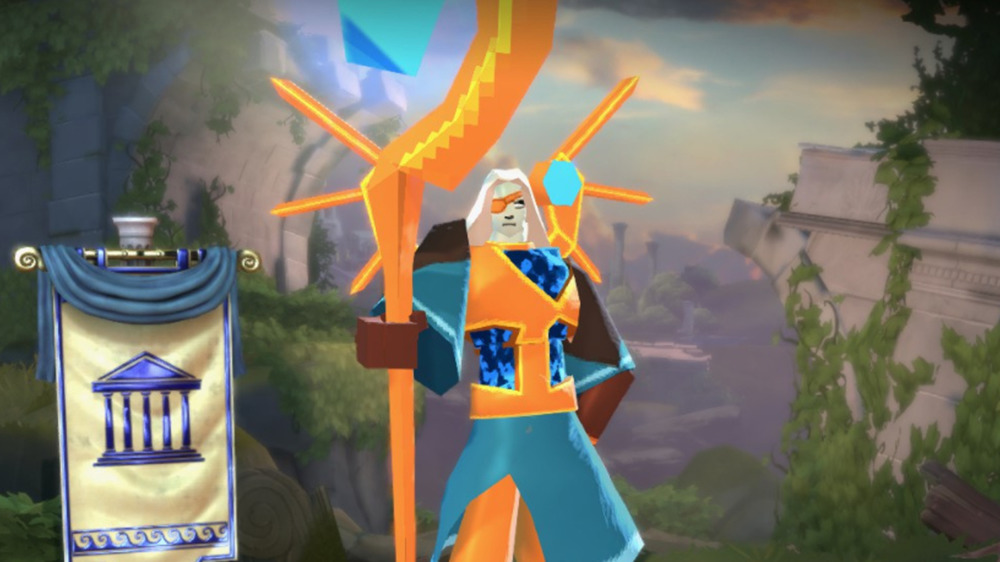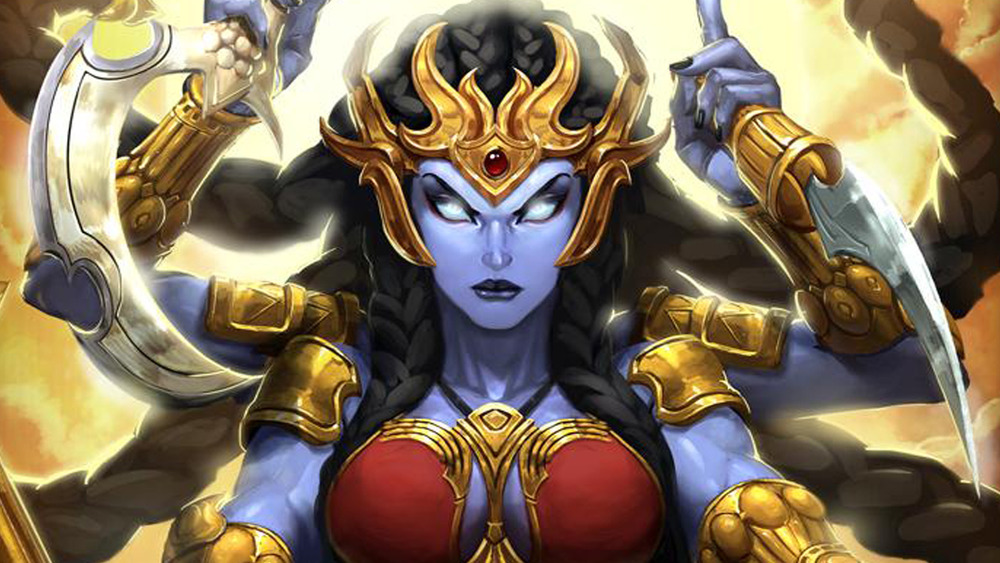The Real Reason These Game Skins Were Banned Or Removed
The ability to dress a character up in a non-standard outfit, or skin, has become an increasingly commonplace feature in recent years. A skin can be as simple as a color palette swap or so complex as to render a character practically unrecognizable. In general, skins usually aren't intended to affect gameplay — just change a character's appearance. The appeal of skins as a customization mechanic lies not in their impact on gameplay but in the simple fun of putting on a new outfit. Given that the sky is the limit when it comes to video game character design, some of the more intricate skins are oftentimes fanciful, fantastical or otherwise outrageous.
In an increasing number of games nowadays, skins are being introduced as microtransactions. Thus, as different methods for monetization in gaming become more commonplace, an increasing number of skins — often requiring real money to unlock — are being introduced into a growing number of titles. As the option to customize player characters has grown in ubiquity, however, the number of skins that have proven controversial has only increased. Some have even been the subjects of bans or outright removals.
Customizable superhero skins in Fortnite
Competitive Fortnite has encountered a few significant road bumps over the course of the game's recent tenure as an esport. In May of 2020, for example, a tournament winner was forced to forfeit all of his prize money after it was revealed he had broken the tournament's rules. In February of 2021, controversy struck again. A set of skins added to Fortnite were so loathed by the game's player base that developer Epic removed them from competitive game modes entirely while they were reworked.
The skins in question were part of a slate of cosmetics called the Boundless set. Its inclusion introduced 14 original superheroes as new playable characters. Each skin, however, included the option to modify its colors, which ultimately granted some players who chose to do so a competitive advantage. This was documented in a video by a Twitter account that shares Fortnite glitches in which he demonstrated how to use the skins' color customization options to create a pure black or pure white character model. Some Fortnite players reported these character models being more difficult to see than standard, multicolored character models. This led to the temporary removal of the skins.
Magneto's King of Spain costume
In late 2019, developer Capcom announced that a downloadable pack of cosmetic add-ons for Ultimate Marvel vs. Capcom 3 would be delayed by roughly two and a half months. Though Capcom never detailed an explicit reason for the change, the DLC pack would no longer include a planned Magneto costume as per the announcement. That Magneto costume was, if not the cause, a likely contributor to the delay.
Magneto's cancleed costume was based on a uniform he wore in a comic book called The Pulse: House of M Special. An article by Kotaku about the Magneto skin explained that his look in the comic replicated a uniform worn by the now-former King of Spain when acting as the Captain General of the Armies. The Royal Household of Spain publicly opposed Magneto's comic book outfit following its release, and Marvel issued an apology that seemingly resolved the issue. When it was announced that the outfit was going to resurface in Ultimate Marvel vs. Capcom 3, the royal family once again publicly opposed its inclusion and threatened legal action. As a result, the skin ultimately never ended up in the game.
The Leo Jumpsuit in Playerunknown's Battlegrounds
Playerunknown's Battlegrounds is among the growing number of games that have implemented skins as a feature to promote microtransactions. In celebration of Halloween, PUBG's developers have occasionally released new sets of fantasy costume cosmetics that were otherwise at odds with the game's quasi-realistic military atmosphere. In 2019, that set of cosmetic items included the Leo Mask and Leo Jumpsuit. When worn together, they could make the player character resemble a lion. Unlike the rest of the cosmetic items released for Halloween that year, the Leo mask and jumpsuit could only be purchased with Battle Points earned through routine gameplay rather than with real-world currency.
Soon after its addition to PUBG, however, the Leo Jumpsuit was temporarily removed from the game. The issue with it was not that it provided players with any sort of competitive advantage. Rather, when jumping onto the map, its tail displayed in such a way that it appeared to be the character's genitals (NSFW, even if unintentionally). PUBG corporation refunded any BP players had spent on the jumpsuit while the company took the time to make sure the lion's tail clearly remained a tail.
Sewn Chaos Amumu and Blitzcrank skins in League of Legends
Whether or not League of Legends has the best skins in gaming, of course, is a matter of opinion. However, League of Legends has a lot of skins, and that's a fact. At the time of this writing, League of Legends includes 1,177 different skins for its 154 different champions. Maintaining a high standard of quality across all of its skins, while doubtlessly difficult to accomplish more than 1,100 times, is a priority at Riot Games. The League of Legends developer made that clear when two skins that were once planned to be added to the game were nixed entirely.
Those two skins were for champions Amumu and Blitzcrank. They both included the moniker "Sewn Chaos" and made each hero appear like a sort of evil stuffed animal. Riot proceeded with their development to the point that they were added to the Public Beta Environment, in which Riot oftentimes tests new features before their implementation into the main version of the game. The skins ultimately proved controversial among the League of Legends community. Riot explained that they were removed after the company determined they didn't meet its desired standard of quality.
Unfair Street Fighter 5 skins
In Street Fighter 5, the latest entry in the longtime esports-viable Street Fighter series, balance is integral to its roster of playable characters. At one point an update by Capcom ruined the balance in Street Fighter 5 entirely, but otherwise Street Fighter 5 has generally remained a feasibly competitive game. One of the largest series of Street Fighter tournaments is the Capcom Pro Tour. Its rules ban 13 different skins from competitive play, all "from a standpoint of fairness" in order to maintain that competitiveness.
Gill's Pyron costume is one example of a skin banned from the Capcom Pro Tour. The skin is largely understood by the Street Fighter community to offer an unfair advantage. It's been described by players as cloaking his EX Special moves and otherwise hiding his limbs beneath its fiery appearance. Another banned skin is a Halloween costume for Urien, changing his appearance to look like Gill. The costume was included in the game before Gill was added as a playable character. Therefore, its removal from tournament viability likely has to do with the fact that Urien could be confused for Gill when outfitted with the skin.
R. Mika's default skin in Street Fighter 5
Nearly every year since 2000, the Evolution Championship Series, or EVO, hosts some of the top tournaments across a variety of fighting games. Among the games generally featured at EVO is Street Fighter, which in recent years has meant its latest incarnation, Street Fighter 5. Historically, Street Fighter esports is not without controversy. In 2020 for example, a Street Fighter pro and past EVO champion was banned from future competition after posting an offensive message on Twitter.
Jumping back in time a little bit, EVO 2016 also saw its own Street Fighter-related controversy. Thankfully, this one was unrelated to player conduct, and was instead the result of a character's default outfit. As a Japanese pro named Fuudo was advancing through the tournament (he ultimately placed second), viewers noticed he switched the costume of his main, R. Mika, to a notably less revealing outfit than the default skin he had been using before. Ryan Harvey, who acted as Fuudo's Japanese translator during the tournament, explained that none other than ESPN had asked Fuudo to change costumes after it deemed R. Mika's default outfit too revealing for its TV broadcast.
Revealing costumes in Dead or Alive 5 Last Round
Mika isn't the only Street Fighter character whose apparel has been met with some controversy. While Street Fighter's cast of characters features its fair share of scantily clad women, it's far from the biggest offender in that department. That (dis)honor most likely goes to the Dead or Alive franchise. After all, Dead or Alive is the only major fighting game franchise to have been spun off into a series of stand-alone beach volleyball games with all female casts.
Some members of the Dead or Alive community thus worried that objectification of its female characters could potentially turn players away from its gameplay. In response they shared a recommendation that more than 120 costumes for 18 characters costumes be banned from tournaments. In total, 10 of Kasumi's costumes were recommended in the ban, for example. Those included a costume that dresses her in no more than skimpy lingerie. These bans were not codified into tournaments' rules, but were suggested in hopes that tournament organizers would decide to follow them on an individual basis. Responses were mixed, and current Dead or Alive tournament rules no longer recommend costume bans.
The M4A4: Howl weapon skin in Counter-Strike: Global Offensive
Counter-Strike: Global Offensive, or CS:GO, implements skins in a fashion notably different from many of its competitors. Skins for its many weapons can be both traded between players and sold for real world money. The weapon skin marketplace is so active, in fact, that a skin for a sniper rifle sold for $61,000 in late 2019, making it the most expensive CS:GO skin in the history of the game. Given that trading CS:GO skins can be something of a lucrative business venture, it's no surprise the system has drawn the attention of those with less-than-noble intentions.
In 2014, one such group of people was revealed by Steam to have plagiarized the design of a skin they had created in Steam's Items Workshop. That system allows players to submit their own skins that can then become implemented in-game. The skin in question — the Howl for the M4A4 rifle — was based on a design created by artist CanisAlbus, who shared details of the theft of their work to their DeviantArt account. As a result, Steam provided all players who had purchased the Howl skin with a specially made replacement.
Custom Counter-Strike: Global Offensive Skins
While weapon skins are the customization feature for which CS:GO has become arguably most well-known, a 2019 patch added to the game introduced custom player character skins as well. Thus, CS:GO began to more closely resemble many of the modern shooters it was competing with. However, those skins soon became the subject of their own controversy, perhaps reminding Valve why it had generally stuck to modifiable weapons in prior updates.
CS:GO's controversial character skins were introduced in a patch called "Shattered Web" based around a series of unique operative missions. Soon after the addition of the new skins, tournament organizers, like the E-Sports Entertainment Association League (ESEA) and the Esports Championship Series (ECS) announced that all custom character models would be banned from tournament play. Roald Van Buuren, who is the director of esports for ECS organizers FACEIT, explained in his announcement that the decision was made because some custom character models were harder to see than default character models. Their quasi-camouflage thus granted players an inherent advantage, hence their removal from tournament play.
Ember Rise skins in Rainbow Six: Siege
Rainbow Six: Siege falls somewhere in between CS:GO and some more recently-released competitive shooters like Overwatch in style. Whereas the gameplay and aesthetics of Rainbow Six: Siege skew closer to CS:GO's military realism and strategic gunplay, players nevertheless must select from among a roster of Operators. Those function akin to Heroes in Overwatch or Champions in League of Legends in that each Operator utilizes a unique combination of weapons and abilities.
Due to its Operator-oriented gameplay, Rainbow Six: Siege includes skins unique to many of its various playable characters. While skins have generally been introduced into the game without incident, a set of skins implemented in a season update called Operation Ember Rise were quickly determined by the game's community to provide players with an unfair advantage. As a result, all Operation: Ember Rise skins were banned from The United States Nationals tournament in 2019. Commenters on Twitter and Reddit explained that they provided camouflage on some maps just like CS:GO's Shattered Web skins, making the character using them considerably harder to see. Furthermore, the effect was worsened for colorblind players.
Smite skins in competitive play
While Smite may not garner the same name recognition as League of Legends, it ultimately competes with the larger of the two MOBA titles in part due to its console availability. Smite was first rumored to be coming to the Nintendo Switch in 2018. Now the title is playable on PlayStation, Xbox and Switch alike. As the game has expanded to new systems, so too has its selection of characters and thus, skins. In 2019 a Baba Yaga character was added to the game. Players can now select from up to seven alternate skins for the character.
Similarly to in Street Fighter 5, not all skins in Smite are tournament viable. The website for the Smite Pro League, which organizes competitive Smite gameplay, includes a list of skins that are banned from competitive play. It cites as a blanket reason that they all include changes to visuals or audio that players have found to be "too intense." However, developer Titan Forge has remained responsive to those concerns from its player base. Some skins, included in a section of their list, have returned to competitive viability following a one-time ban.
Kali's original skin in Smite
Including Baba Yaga, Smite's playable roster of characters is comprised of deities from various world mythologies. The Hindu death goddess Kali was among those playable upon Smite's initial release. That said, Kali's original design was ultimately removed. Her initial look was only featured in a beta release of the game before it was reworked. The redesign included not just a visual update but new voice lines and updated abilities.
Reasons for changes to Kali were never publicly stated by developer Titan Forge. Some commenters in a Reddit thread discussing the changes, however, have a few theories as to why they were made. Most immediately striking is that Kali's redesign includes more clothing coverage . One commenter cited a theory that some practicing Hindus objected to her inclusion, but proposed that the number of such people was overall too low to justify the change. They then pointed out that the changes were made when publisher Hi-Rez began working with Tencent. The alterations to her abilities ultimately toned down some violent animations, so the redesign seems to have been made in the name of an overall increase in family friendliness, possibly at the behest of Tencent.



